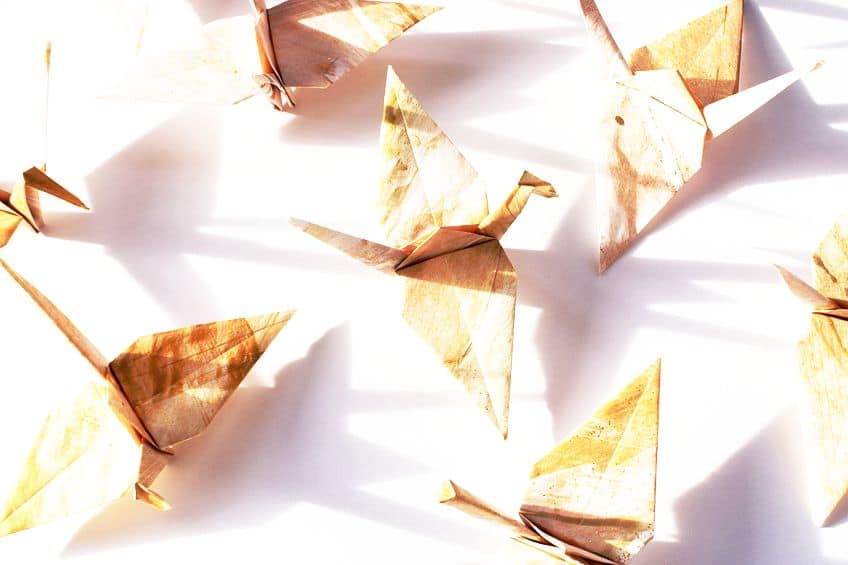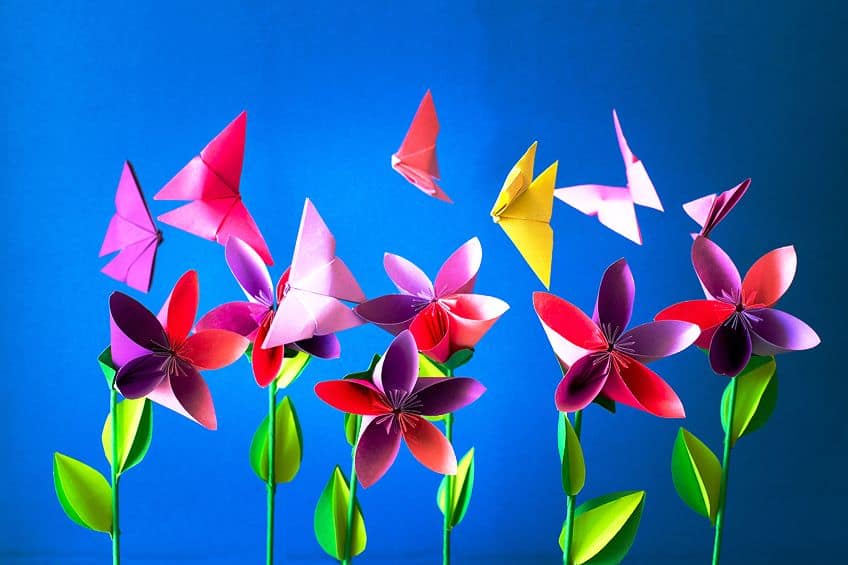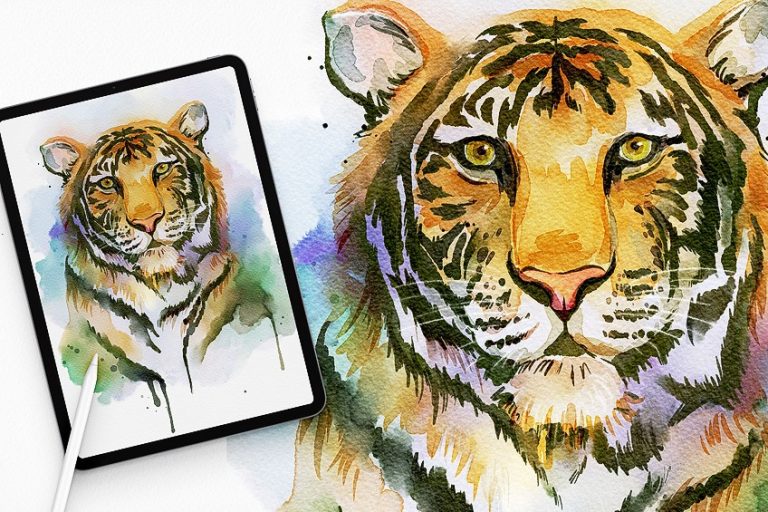What Is Origami? – Learn the Ancient Art of Paper Folding
Chances are that you have at least heard about origami, and you might understand that it is some type of paper-folding art. But where did origami originate from, and is origami an art or is it simply a hobby? To answer these questions and more, we will be looking a little closer at what origami is and where it came from below.
Table of Contents
What Is Origami?
Paper-folding art can be described as an origami meaning that has its origins in China and Japan. The word itself is Japanese, oru, which means “to fold” and kami, which means “paper”. You can view origami as both an art and a hobby that can be done by anybody at any age. Many different designs can be achieved, from simple models to more complex origami models. You can create simple boxes, or you can create birds or flowers. Models can be both two-dimensional or more complex three-dimensional objects.
Origami requires few materials and simple designs can take minutes to complete, while other complex designs can take hours to complete.

One of the more common designs that most are familiar with is the Japanese paper crane. Ultimately, the purpose of origami is to take a square piece of paper and transform or fold it into a finished sculpture-like object. Modern origami usually avoids the use of cutting or gluing the paper. However, another technique involves cutting, which is referred to as kirigami.
Brief History of Origami
There are some differing viewpoints as to who created origami, as quite a few cultures have played a part in the formation of what we now know as origami. It has mainly been attributed to China and Japan, but there have also been European influences. Much of the information on the subject before the 15th century is not available, so it remains a bit of a mystery. Also, the process of folding could have already been in use on other materials like leather and cloth.
The paper itself was invented in China in AD 105 and was a material that was cheaper than the original silk that was used as a writing surface but remained something only available to the rich.
In medieval China, zhezhi, the Chinese origami meaning for paper folding was popular in funeral ceremonies. Paper-making skills were later brought to Korea and from there to Japan in the sixth century with the Buddhist monks. The Japanese then improved the paper quality, which became better for folding. Initially, origami art was used specifically for various ceremonial and religious purposes to provide decoration and symbolism, referred to as origata. However, it was only during the Edo Period (1603-1868) that origami developed into more of an art form or hobby.

You would often see nature-based origami art, for example, birds or flowers. During this time, the sheets of paper could also be strategically cut, unlike today, where the entire paper sculpture uses only folding techniques. Originally, folding shapes out of paper was known as orikata, and only later in 1880 did it become known as origami. You can find evidence that origami was part of the culture in a short poem that was written in 1680 by Ihara Saikaku, where he referred to origami butterflies. The earliest instructional book was Sembazuru Orikata (1797) by Akisato Rito, which translates to “thousand crane folding.”
Other cultures indeed contributed to paper folding, but you can say that the Japanese were the ones who discovered the possibility of using origami as an art form.
The history of origami continues In Europe, where the process of napkin folding was quite popular in the 17th century. Different techniques and ways to fold were used to fold the material to form objects. However, with the spread of paper, it became more popular as it is easier to fold. One of the main figures that brought origami into the West was a German educator by the name of Friedrich Fröbel (1782–1852), who came up with the kindergarten establishment. He was an enthusiast of the paper-folding art of origami for its educational value and incorporated paper-folding activities into his curriculum, which then helped to spread this form of art around the world.

The folding process uses ideas that are relevant to mathematics, so it is a great teaching tool. Other European countries where origami was practiced include Spain, where it is known as papiroflexia or pajarita. Akira Yoshizawa (1911-2005) is another prominent figure who created origami into art and has been called “the grandmaster of origami”. He later published a book known as Atarashi Origami Geijutsu or New Origami Art (1954). This book established the foundation for the various symbols that everyone uses today to describe how to fold a specific model.
He brought great awareness to the various origami techniques, which became available to the world through his book.
Through the years, as paper became more affordable, it also became more available to ordinary people, which is why it was also seen as a craft or recreational origami. Today, the rules have loosened, and many now use cutting and gluing to create their final design. Also, origami paper is not exclusively used, as many use other materials like wrapping paper, scrapbook paper, or handmade paper, among others.
The Basics of Origami Art
Even though you can use various types of paper for origami, most of the origami models are folded using thin, square sheets of paper that can handle all the intricate folding. You can easily purchase origami paper that is pre-cut and comes in a variety of colors. The standard paper size can vary from 7.5 cm x 7.5 cm (about three inches) to 35 cm x 35 cm (about 14 inches). These sizes can be used for most origami models and projects.
Types of Paper Used in Origami
What is origami paper? Most of the models or designs created use a single square sheet of paper. However, you can also use other non-square pieces of paper. Many of the different styles of origami also use multiple sheets of paper to create a single origami art piece. It is easier to simply purchase already pre-cut origami paper, but you can use any flat material that can hold a crease. The Japanese word for paper is kami, which is often the term used for origami paper. You can get these in pre-cut and pre-packed squares in various sizes.
Most often the paper has color on one side and remains white on the reverse side. However, you can also get paper with color and patterns on both sides.

You will find that origami paper weighs less than normal copy paper, which makes it appropriate for a variety of designs. Normal paper weighs in at about 80 gsm (grams per square meter), which is what you use for a printer. Origami paper is thinner and works best at about 60 to 63 gsm. The heavier the paper, the harder it is to fold and manipulate. Normal paper can be used to make simple folds, while heavier paper can be wet-folded. Next, we have a few more types of paper that can be used for origami art.
Foil-Backed Paper
This paper is thin, but strong and provides a metallic look to the origami designs. It uses a thin sheet of foil that is attached to thin paper. So, there is usually one side that is metallic in appearance, while the other side is white. You could try making your own tissue foil, with a thin piece of tissue paper, aluminum foil, and another layer of tissue paper.
Washi Paper
Washi is known as the more traditional paper used for origami in Japan. This type of paper is more durable than ordinary paper and can be made from a variety of barks or fibers from trees and bushes like the gampi shrub, but the paper can also be made from hemp, wheat, rice, or bamboo. Other names for these types of artisan papers include unryu, Koza, saa, or lokta. Some of these papers are traditional to Japan, but others come from areas like Nepal, and Thailand.
These types of papers are very thin and can be folded easily, making them ideal for narrow folds.
Paper Money
Many also enjoy using paper money, which is also known as money origami, dollar origami, or orikane, which means money folding. It is a fun and easy hobby to learn, and there are many videos online that will show you how.
Folding Techniques and Terminology
If you are new to origami, all the techniques and terms can be a bit overwhelming. There are quite a few origami books that contain descriptions of basic techniques, and of course, there are also many resources online. Below are three of the more basic folds you get in origami.
Valley Fold
This is one of the more basic folds and is quite easy to achieve. The valley term refers to the way the paper folds down. When looking at an origami diagram, a valley fold is usually indicated by a dashed line. You must then take your paper and fold it along the dotted line shown. So, if you have a square piece of paper, with a dotted line going down the center, fold the paper and you will notice how it comes into a “v’ shape that represents a valley.
Another term you might come upon is pre-creasing.

This means you will fold and then unfold the paper, which will help you set up another fold that you will need to do later. The pre-crease is simply the beginning stages you might not be able to do at a later stage during the folding process.
Mountain Fold
The mountain fold, which is represented by a dash-dot-dot on the instruction diagram, is the reverse of the valley fold and rises up. Sometimes, on the diagram, you might also see an arrow, which shows you the direction of the fold. Again, you might also be asked to do a pre-crease or fold and unfold that will be used later.
Squash Fold
A squash fold is taking a step up when it comes to folding, as it is slightly more challenging but still easy to achieve. You create a fold that forms something like a pocket, which you then squash down into position. You will first need to create some creases, for example, diagonal creases by folding your square paper to form a triangle. Fold on both sides so that when the paper is unfolded, you have a cross-crease on the paper. When folding your second crease and the paper is now in a triangle shape, fold this over again in half and unfold. Open up the half of the triangle so it forms a pocket and then push down the paper, so it is centered on the lines that were created.
Follow the specific design instructions, as there are different ways to do a squash fold.

Sometimes, the placement of the paper will be symmetrical, but on other occasions, it could also be off-center, depending on the design. Make sure you do the fold as instructed, otherwise, it will completely throw you off when following the rest of the required steps. Once you have mastered the squash fold, it can be used to create a variety of models, from animals to flowers. The bases you create with these folds are important, as these are your foundation for creating more complex designs. Some common bases you will come across include the following.
- Bird base
- Square base
- Fish base
- Pig base
- Book base
- Kite base
- Gatefold base
- Diamond base
- Waterbomb base
- Frog base
Other Basic Origami Folds
Once you have tried these three origami folds, you can move on to others. All of these folds form your standard origami bases, which you can use to create numerous models. Below are a few more types of folds you will come across.

- Pleats
- Sink folds
- Reverse folds
- Petal fold
- Crimp fold
- Rabbit ear fold
Common Origami Symbols and Diagrams
In origami, you will come across various symbols and diagrams that help you to fold and create your origami art. These symbols are recognized worldwide and are something you should understand to accurately follow the paper folding instructions. You can call it a type of “origami language”. Robert Lang (born in 1961) is an American physicist who wrote a series of articles and proposed a set of standard origami symbols.
These were an update on the ones first developed by Akira Yoshizawa, with reduced variations.
He also came up with a method known as technical origami, or origami sekkei. This is a method of designing new complex origami models by mathematically and theoretically plotting them out on paper before any folds are done. Below are only some symbols, there are many more you also need to know.

- Valley fold: Line of dashes.
- Mountain fold: Line of dashes and dots.
- Series of different arrows: Different types of arrows indicate to fold in a particular direction, to fold and unfold, fold behind, or turn the paper over.
- Crease created in the previous step: Solid line to indicate a pre-crease that was created in a previous step.
- Push here: A large fat outlined arrow to indicate where you must push the paper.
- Rotate paper: A circle arrow that goes either clockwise or anti-clockwise, with the number 90 in the center, indicating which way to rotate the paper.
Advanced Origami Techniques
So, once you understand all the folds and symbols and have practiced quite a bit to get the hang of things, you might want to explore the various origami styles. Some of these are quite challenging and involve more advanced techniques.

- Minimal origami: The emphasis on these models is on simplicity, with minimal folds but still capturing the essence of a subject.
- Realistic origami: These can involve complex designs that help to portray the detailed features of a subject.
- Action origami: Another complex style that can also involve the movement of the origami paper subject.
- Composite origami: This uses multiple origami sheets, each one folded differently to form a different part of the subject.
- Pureland origami: An easy-to-duplicate style that only uses certain folds, namely the valley and mountain folds. Thought up by a British paper folder by the name of John Smith in the 1970s.
- Modular origami: This is composed of multiple sheets of paper, creating different geometric designs that are all connected to form a single three-dimensional shape.
- Practical origami: As the name implies, these are models created for practical use. For example, gift boxes.
- Wet folding origami: Water is used to dampen the paper, which makes it easier to manipulate and creates a rounder and more sculpted model.
- Tessellations: A geometric pattern is created by the edges of the folded paper and can be two or three-dimensional. These can be used alone or within other complex designs.
- Crumpled origami: A simple style of crumpling the paper before folding, which helps to create more realistic forms.
- Kirigami: Cutting and folding were used in traditional Japanese origami, but many modern paper folders do not recognize these as origami, so it was given another name. The result is a three-dimensional impression that stands up from the surface.
Popular Origami Models
Many easy origami models are ideal for beginners, and other more complex models are for the more experienced paper folder. Many of the beginner ideas are traditional models like the ones you can see below.

- Origami crane
- Origami boat
- Origami frog
- Origami lotus flower
- Origami butterfly
- Origami swan
- Origami hat
- Origami star
Then you get contemporary or more modern origami art. Origami became more of a way for artists to come up with new ideas to express themselves. This is what makes origami more of an art form than simply a craft. The beauty and appeal of origami does not solely rely on its aesthetic appeal, but the fascination is also with the fundamental principles used, which include discipline, problem-solving, and precision.
These can include intricate designs of geometric shapes, insects, or animals.
Benefits of Practicing Origami
There have been many purposes of origami, beginning with the traditional uses for ceremonies. Beautiful folded paper models were created for various formal events, such as weddings. Origami has also been used as decorative elements as festive decorations or placed in homes or temples. Today, origami is a fun recreational activity and has even developed into an art form. When creating origami models, it helps you to relax and focus on the moment.
People, from young to old can benefit from practicing origami.
Child Development and Origami
Origami is a wonderful way to help develop motor skills as well as hand-eye coordination in children. It can also greatly help a child’s mental focus and concentration. The precision it takes to create origami models also teaches kids patience, and attention to detail and helps develop problem-solving skills.
Working with different color papers and creating three-dimensional designs can also create an awareness of perspective and improve creativity.

These benefits can also be gained by anyone older but are especially useful for those that suffer from cognitive impairment or diseases like Alzheimer’s. Origami can be used to help improve memory, motor skills, as well as cognitive function.
Origami and Stress Relief
When practicing origami, you need to apply concentration and focus, which is a great way to help your mind relax. Origami paper folding can even develop into a form of meditation and is an ideal method for practicing mindfulness. Origami is also something you can do to boost creativity and can be used to find inspiration for other art projects. There is also a sense of satisfaction when the final origami model has been completed.
Common Mistakes and Origami Tips
When folding paper and making a mistake, and then using the same paper to start again can become confusing as the folds in the paper get mixed up. When practicing, it is best to start with a new piece of paper if you have made a mistake, to avoid getting frustrated. To begin with, if you are only practicing, consider using basic paper or wrapping paper before you move on to origami paper. You should also have a basic knowledge of origami techniques and terminology, which will make it easier to understand the diagrams and folding instructions.
Begin your origami journey with simple designs and then only consider doing more challenging ones.
Precision is important, make sure you follow instructions properly to avoid unnecessary frustration. You should practice enough that you can eventually do a few of the more basic bases from memory before moving on to more advanced styles. If you have a bit of experience and want to move on to more complex designs, it is a good idea to have some basic knowledge of geometry. You should be able to understand that three-dimensional designs are created using lines, points, corners, planes, and intersections. Below you will discover a few more basic tips for creating origami art.

- Always use proper origami paper that has the best folding capabilities and is perfectly square.
- Make sure when you are folding paper, to do it with clean and dry hands.
- Folding the paper should be done cleanly and precisely. So, try to work on a hard flat surface.
- You can use a ruler to help with scoring creases, which require more accuracy when folding.
- Do not be afraid to experiment with various models.
- It is often easier to fold the paper away from you, instead of toward you.
- Learn and master a square base, which can be used to create many origami designs.
Origami might seem intimidating to some, but the best way to become skilled at origami is to practice as much as possible. There are many beginner origami projects you can start with, so be patient and you will soon become skilled at the paper-folding art of origami.
Take a look at our origami webstory here!
Frequently Asked Questions
Can You Make Origami With Any Type of Paper?
You can use any type of paper that is strong, pliable, and folds easily. However, what is origami paper? To get the best results, it is recommended that you use proper origami paper that is thin enough, durable, made to fold nicely, and is also perfectly square.
How Long Does It Take to Learn Origami?
If you are looking at becoming an origami master, this will take some time, a lot of practice, and plenty of patience. Even if you want to become simply good at origami, this can take time. However, you can learn some of the basic folds and techniques in a few hours.
Is Origami Art?
Many origami designs and models can be seen as practical and are used for various purposes. However, various origami designs are created simply for aesthetic appeal and can be considered an art form. You could do origami as a hobby or consider it as a career; however, it might not be the most stable income source.
In 2005, Charlene completed her Wellness Diplomas in Therapeutic Aromatherapy and Reflexology from the International School of Reflexology and Meridian Therapy. She worked for a company offering corporate wellness programs for a couple of years, before opening up her own therapy practice. It was in 2015 that a friend, who was a digital marketer, asked her to join her company as a content creator, and this is where she found her excitement for writing.
Since joining the content writing world, she has gained a lot of experience over the years writing on a diverse selection of topics, from beauty, health, wellness, travel, and more. Due to various circumstances, she had to close her therapy practice and is now a full-time freelance writer. Being a creative person, she could not pass up the opportunity to contribute to the Art in Context team, where is was in her element, writing about a variety of art and craft topics. Contributing articles for over three years now, her knowledge in this area has grown, and she has gotten to explore her creativity and improve her research and writing skills.
Charlene Lewis has been working for artincontext.org since the relaunch in 2020. She is an experienced writer and mainly focuses on the topics of color theory, painting and drawing.
Learn more about Charlene Lewis and the Art in Context Team.
Cite this Article
Charlene, Lewis, “What Is Origami? – Learn the Ancient Art of Paper Folding.” Art in Context. July 18, 2023. URL: https://artincontext.org/what-is-origami/
Lewis, C. (2023, 18 July). What Is Origami? – Learn the Ancient Art of Paper Folding. Art in Context. https://artincontext.org/what-is-origami/
Lewis, Charlene. “What Is Origami? – Learn the Ancient Art of Paper Folding.” Art in Context, July 18, 2023. https://artincontext.org/what-is-origami/.









